
التفكير ثلاثي الأبعاد باستخدام الجسم
・يكون جسم الطالب ثابتًا في المدرسة
في المدرسة، يجب على الطلاب إجراء الاختبارات بمفردهم أثناء الجلوس بهدوء. وكما يرمز هذا المثال، فإن المعرفة حتى الآن تتطلب استخدام الدماغ مع إبقاء الجسم ثابتًا، والحد من كمية المعلومات. على سبيل المثال، تبلغ كمية المعلومات في مسألة مثل "1+1=" عدة بايتات. ما نسميه "المعرفة" التي يتم تدريسها في المدرسة، لا تولي أي اهتمام بالجسد، فيتم اكتسابها من خلال اللغة والرياضيات، وهي معلومات قليلة للغاية من حيث الحجم. ومع ذلك، إذا ألقينا نظرة سريعة حول أنفسنا، سيتضح لنا أن العالم يحتوي على كمية هائلة من المعلومات.
・القدرة على التعامل مع الناس والعالم
هناك مجموعة متنوعة من المهارات، مثل المخالطة الاجتماعية، والقيادة، والتواصل، والتي ترتبط جميعها بالقدرة على التعامل مع الناس والعالم. وتتطلب هذه القدرات نشاطًا عقليًا كبيرًا لمعالجة الكم الهائل من المعلومات المكانية التي تتغير باستمرار، مثل تعبيرات وسلوك الأشخاص في محيطنا. وهي مجموعة من الأنشطة الفكرية التي تختلف بشكل كبير عن الذكاء المستخدم حين يكون الجسم ثابتًا في مكانه، ويعالج كميات قليلة من المعلومات، كما هو الحال في الدراسة في المدرسة.
・يدرك البشر العالم بأجسادهم ويفكرون بأجسادهم
إن مهارة إنشاء وسرد القصص التي تحرك الناس عاطفيًا لا يقتصر اكتسابها على التدريب المتكرر على كتابة المؤلفات الأدبية. وتُنسج القصص من التجارب التي نكتسبها أثناء استكشاف العالم بأجسادنا.
يدرك البشر العالم بأجسادهم ويفكرون بأجسادهم.
・الجسم عبارة عن شبكة معلومات ضخمة
في الواقع، بالإضافة إلى قيام الدماغ بتوجيه الجسم، فقد أصبح من الواضح أن الجسم عبارة عن شبكة معلومات ضخمة تقوم فيها الأعضاء والخلايا المختلفة بتبادل المعلومات بشكل ديناميكي. على سبيل المثال، بدأنا نفهم أن العضلات والعظام التي تحرك الجسم تساهم في تطور الحُصَين (جزء الدماغ المتعلق بالذاكرة والوعي المكاني) وتوجيه الحصين لتكوين الذكريات.
・الوعي المكاني لا يقل أهمية عن القدرات اللغوية والرياضية
يقال في السنوات الأخيرة إن الوعي المكاني، وهو القدرة على فهم العلاقات المكانية بين الأشياء وتخزينها في الذاكرة، لا يقل أهمية عن القدرات اللغوية والرياضية. ويُعتقد أن للوعي المكاني دورًا مهمًا في الإبداع والابتكار.
علاوة على ذلك، بدأنا نفهم أن الحصين، المرتبط بالوعي المكاني، يتطور من خلال استكشاف الجسم والتجول في مساحات متنوعة ومعقدة. وفي تجربة أجريت على الفئران، كان عدد من الخلايا العصبية لدى شق الحصين لدى الفئران التي استكشَفت مساحات متنوعة ومعقدة أكبر بـ 40 ألف مرة من الخلايا العصبية لدى الفئران التي لم تستكشف مثل هذه المساحات، وأن حجم الحصين زاد بنسبة 15%، مما أدى إلى تعزيز الوعي المكاني لدى الفئران التي استكشفت مساحات أكبر. ومع ذلك، فإن الأطفال في العصر الحديث غير قادرين على اللعب بحرية في الخارج. ووفقا لإحدى الدراسات، انخفضت المدة التي يقضيها الأطفال في اللعب بحرية في الخارج في الولايات المتحدة بنسبة 25% بين عامي 1981 و1997.*
*مجلة العلوم نوتيلوس: للأطفال، التعلم يتحرك
・ التفكير ثلاثي الأبعاد والتفكير عالي الأبعاد
لا يقتصر الوعي المكاني على المساحة نفسها فحسب، بل يرتبط بالقدرة على الفهم والتفكير في العالم بشكل ثلاثي الأبعاد. ويطلق تيم لاب على هذا "التفكير ثلاثي الأبعاد"، ويطلق على التفكير في بُعد أعلى اسم "التفكير عالي الأبعاد".
・يمكن استخراج صفار البيضة من البيضة دون كسر القشرة
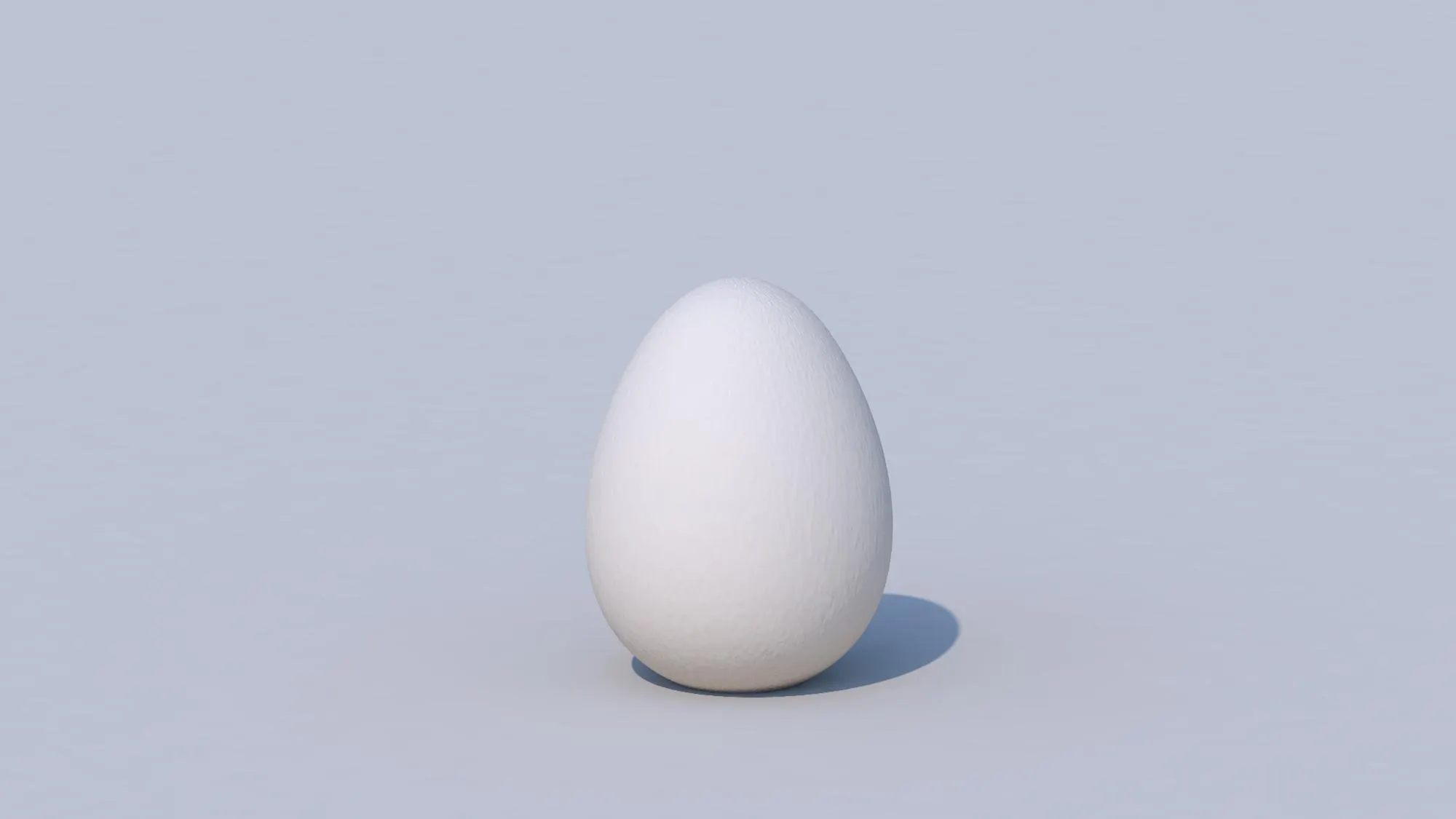
هل يمكن استخراج صفار البيض دون كسر قشر البيضة؟
نحن نميل إلى الاعتقاد بأنه لا يمكننا استخراج صفار البيض دون كسر البيضة. وذلك لأننا نفكر في ثلاثة أبعاد. ومع ذلك، إذا فكرنا في أربعة أبعاد، فيمكن استخراج الصفار دون كسر البيضة. ومن الصعب علينا أن نتخيل ذلك، لأننا نعيش في فضاء ثلاثي الأبعاد.
وبما أن هذا الأمر صعب، فلنفكر في البيضة باعتبارها بيضة مقلية مسطحة، أي شيء ثنائي الأبعاد. في العالم ثلاثي الأبعاد الذي نعيش فيه، يمكننا استخراج صفار البيض المقلي من الأعلى، حتى نتمكن من استخراج الصفار بسهولة دون كسر بياض البيض. ومع ذلك، في عالم مسطح ثنائي الأبعاد، سنكون موجودين على نفس المستوى المسطح مثل بياض البيض. لذلك، بما أننا سنحتاج إلى المرور بنفس مستوى البيضة المقلية لاستخراج الصفار، فسنحتاج إلى اختراق بياض البيض لاستخراجه.
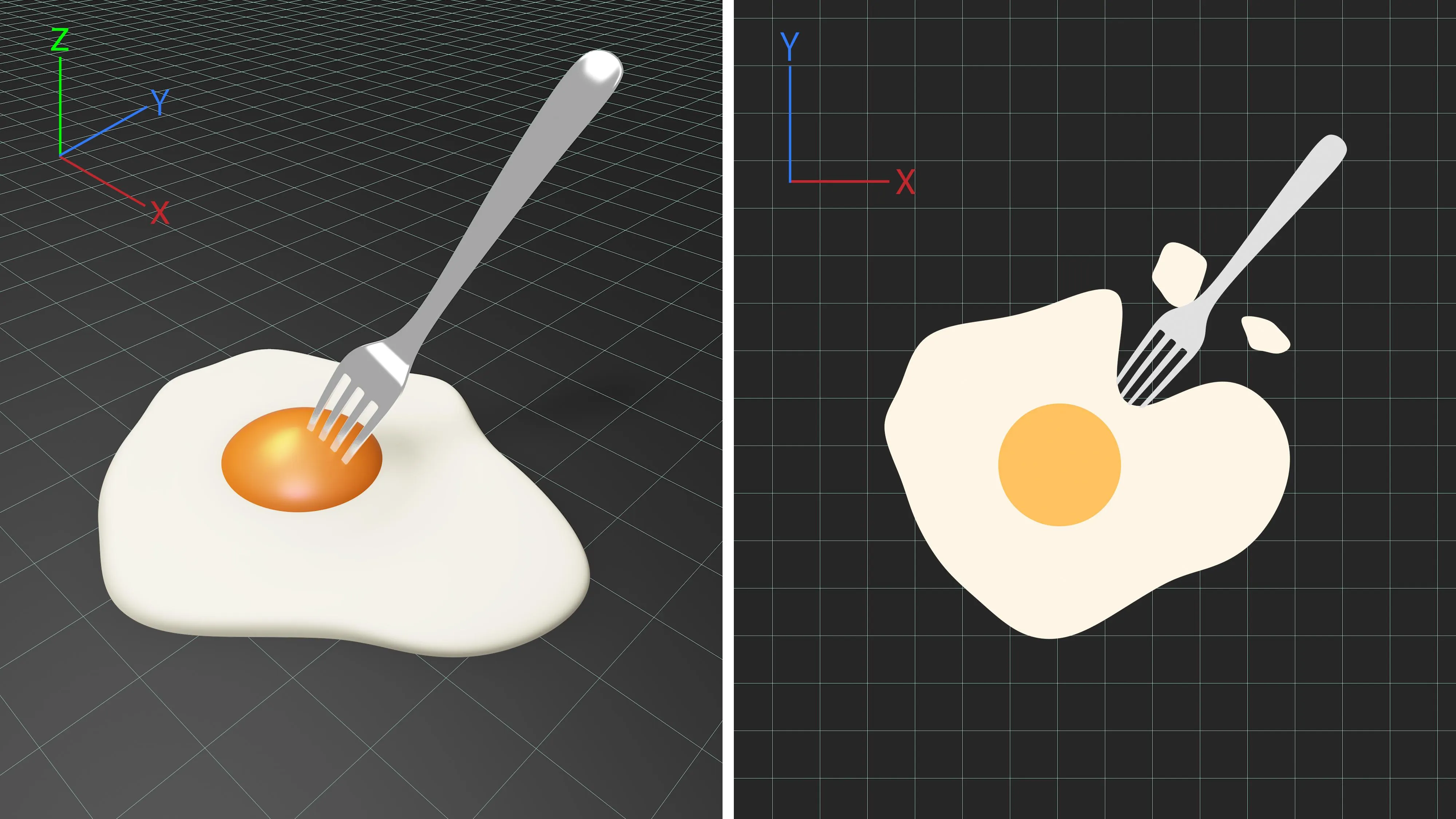
كما هو موضح، فإن التفكير ثنائي الأبعاد والتفكير ثلاثي الأبعاد لهما أبعاد مختلفة حرفيًا. إن وجود أبعاد مختلفة يعني أن كيفية رؤية الأشياء والتفكير فيها، بالإضافة إلى طرق حل المشكلات، مختلفة تمامًا.
・تتشكل المدن من مستويات مسطحة، وكذلك الورق والكتب وأجهزة التلفاز والهواتف الذكية هي أيضًا مستويات مسطحة
في الطبيعة، مثل الغابات والجبال، لا توجد مستويات مسطحة، فالمناظر الطبيعية معقدة وثلاثية الأبعاد. اعتاد البشر إدراك الفضاءات ثلاثية الأبعاد بأجسادهم. ومع ذلك، في المدينة، لا يوجد سوى مستويات مسطحة. علاوة على ذلك، فإن الورق والكتب وأجهزة التلفاز والهواتف الذكية هي أيضًا مستويات مسطحة. دون أن ندرك ذلك، نتخلى عن أجسادنا ونرى العالم ثنائي الأبعاد، فقط بعقولنا. إذا نظرنا إلى العالم بشكل ثنائي الأبعاد، فإن أفكارنا تصبح ثنائية الأبعاد. على سبيل المثال، إذا كانت الشركة التي تعمل بها لديها مخطط يسمى المخطط التنظيمي، فإن مؤسستك ثنائية الأبعاد، وبالتالي من الطبيعي أن يكون التفكير ثنائي الأبعاد سائدًا في مؤسستك.
・التفكير الثلاثي الأبعاد باستخدام الجسم
يفهم البشر العالم ويفكرون بأجسادهم. ومن خلال استكشاف عالم معقد ثلاثي الأبعاد بأجسادهم، يفهم البشر العالم بشكل ثلاثي الأبعاد، وتصبح أفكارهم ثلاثية الأبعاد. انطلق مشروع غابة تيم لاب الرياضية على أمل تشجيع تعزيز التفكير ثلاثي الأبعاد والتفكير عالي الأبعاد في جسم الإنسان.
FEATURED WORKS
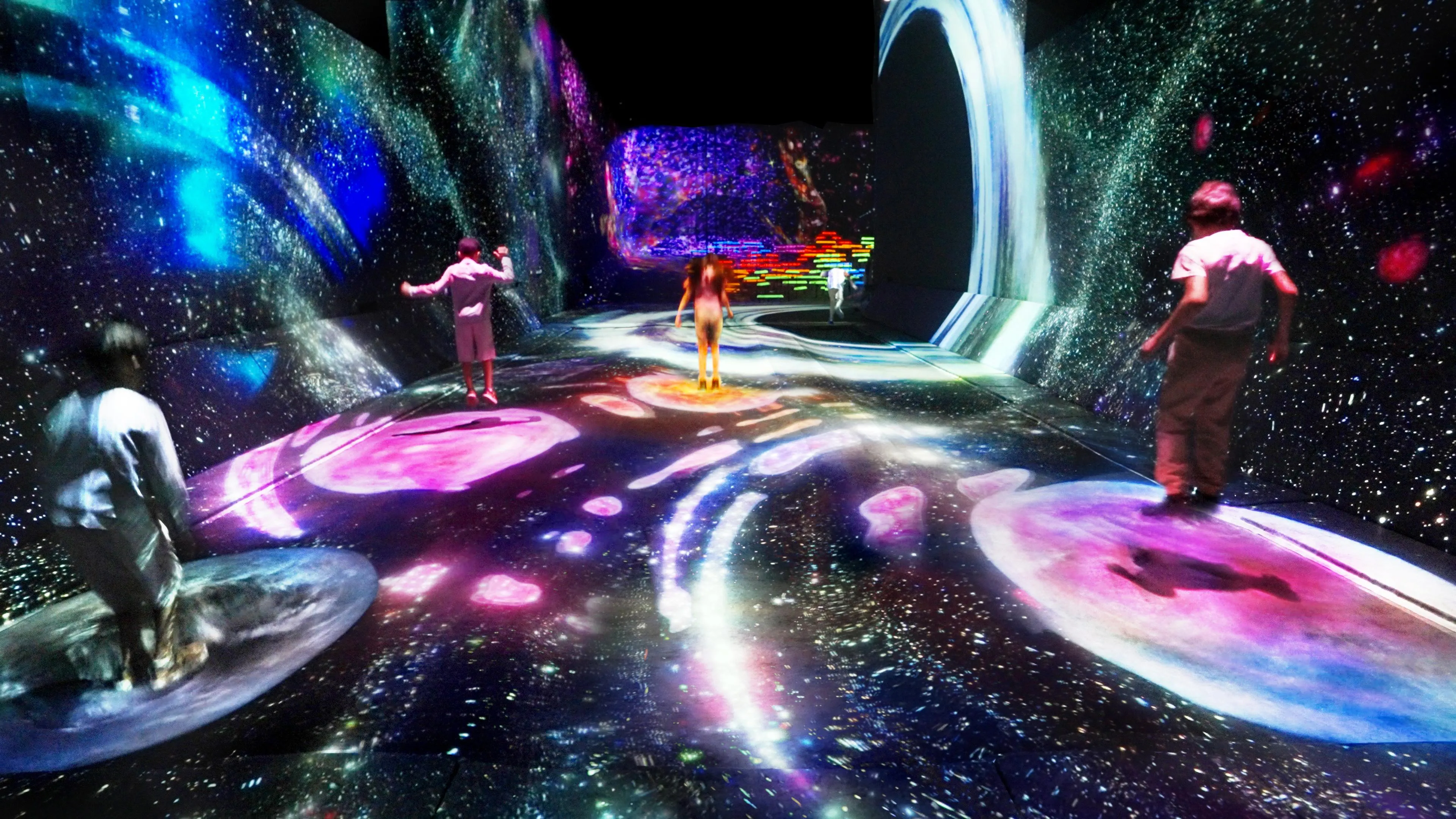
teamLab, 2022-, Interactive Installation, Sound: DAISHI DANCE
سطح "القفز المتواصل" عبارة عن سطح مرن يمكن للأشخاص القفز عليه، والغوص فيه أو القفز أعلى من المعتاد.
عند الوقوف على سطح "القفز المتواصل"، يغرق السطح تحت قدميك، مما يؤدي إلى تشكل تشوهات في المكان والزمان. ويجذب هذا التشوه غبار النجوم من الكون ويولد نجومًا جديدة. وإذا قفزت فوق أحد النجوم، يبدأ ذلك النجم بالتحرك، وإذا طاردت النجم وواصلت القفز فوقه، سيكبر النجم. ويؤدي القفز على مذنب أثناء مروره فوق النجم إلى انفجار المذنب ونمو النجم بشكل أكبر بكثير. وعندما تنتهي حياة النجم، يعود إلى غبار نجمي ويتحول إلى لبِنات لنجوم جديدة.
ويصبح النجم العملاق والثقيل في النهاية ثقبًا أسود يبتلع جميع النجوم والغبار النجمي المحيط به.

التسلق في الهواء وسط أسراب من الطيور الملوَّنة
teamLab, 2018-, Interactive Installation, Sound: teamLab
وتطير أسراب من الطيور بحرّية في هذا الفضاء، وعندما تطير بالقرب من الأشخاص، تتحول إلى لون الدرجات التي يقف عليها الأشخاص.
تتميّز حركة الآلاف من الطيور بجمالها وغموضها، وتظهر وكأنّها شكل حياة عملاق واحد. ولا تتبع الأسراب أي قائد ولا يوجد توافق متبادل في ما بينها، ولكن الطيور تتحرّك بناء على مبدأ بسيط، وهو إذا تحرّك الطائر الذي بجانبها، ستتحرّك هي أيضًا. ومع ذلك، فإن الآلية البيولوجية التي تدفع مئات الطيور في الوقت نفسه لا تزال لغزًا، ويبدو أن هناك مبدأ كوني لم يفهمه البشر بعد. وعلى أي حال، فإنّ تنسيق ألوان الأسراب ليس محددًا مسبقًا، حيث تتحرّك الطيور متأثّرة بالناس استنادًا إلى قاعدة بدائية غير معروفة للبشرية، وتولّد ألوانا معقدة وجميلة غير مقصودة في ذلك الفضاء.
العمل الفني ليس صورة مسجلة مسبقًا يتم تشغيلها من جديد؛ بل يتم إنشاؤه بواسطة برنامج حاسوبي يعرض العمل باستمرار في الوقت الفعلي. ويؤدي التفاعل بين الأشخاص والأعمال الفنية إلى تغيير مستمر فيها، لذلك لا يتم إعادة عرض الحالات البصرية السابقة، وستستمر بالتغير بلا نهاية. والصورة التي تتجلّى في هذه اللحظة لا يمكن رؤيتها مرةً أخرى.
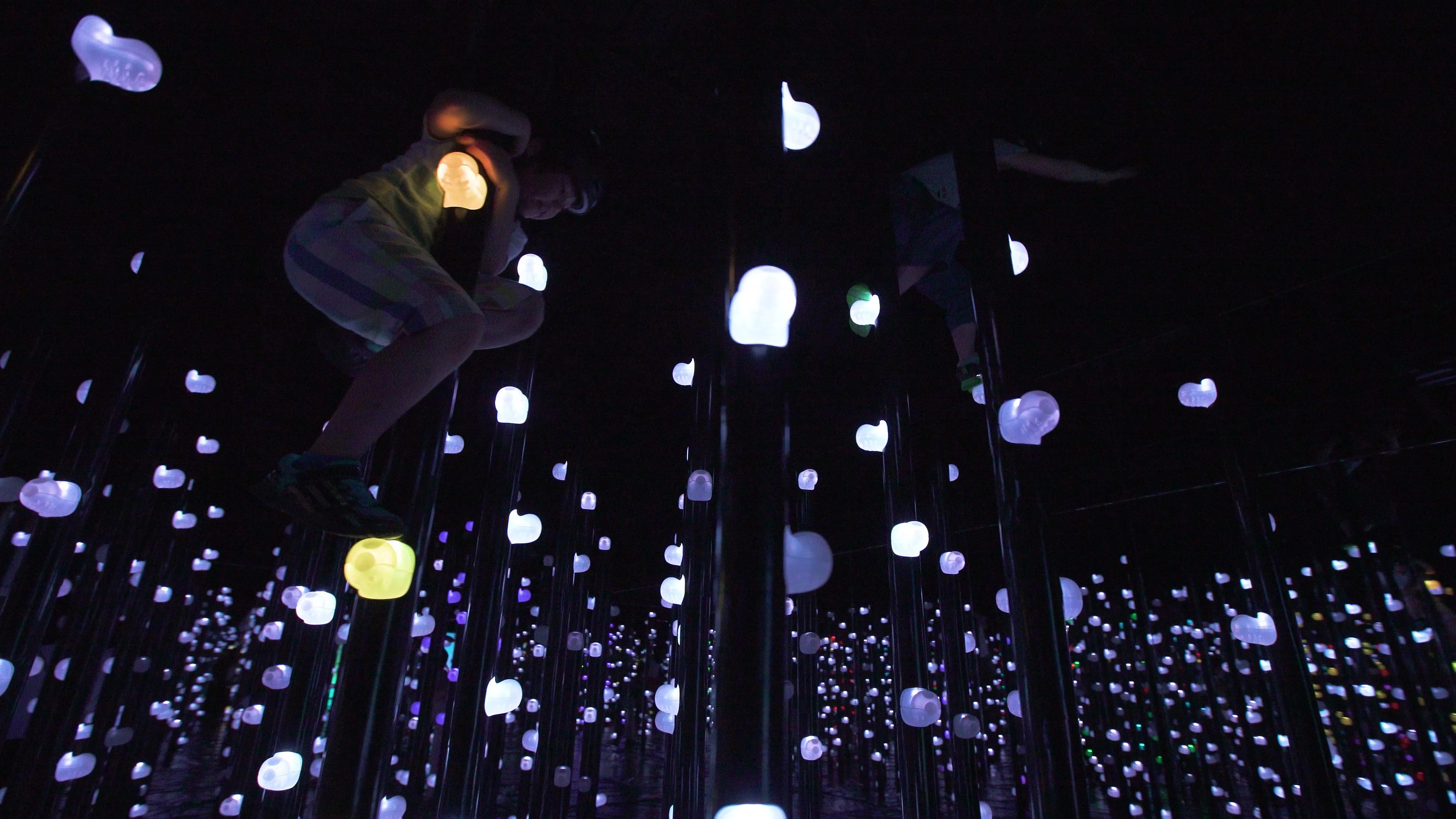
Light Forest Three-dimensional Bouldering
teamLab, 2018-, Interactive Digital Installation, Sound: DAISHI DANCE
Three-dimensional Bouldering was developed by teamLab, it features sparkling gemstones distributed three dimensionally in a space which people climb to move through the space.
This is a space developed by teamLab that features sparkling gemstones distributed three dimensionally. It’s called Three-dimensional Light Bouldering because the gemstones that have been distributed in three dimensions are climbed like footholds in bouldering. The sparkling gemstones form the boulders and visitors have to use both hands and feet on each plane to navigate their way around the space three dimensionally.
Visitors wear a badge that glows a specific color and then make their way through the course stepping on gemstones of that color. If you proceed using only your color gemstones, then the badge will signal to neighboring boulders to make them glow the same color and a tone specifically. Your badge and the surrounding boulders will continuously react to each other. So the more you are able to navigate using just your own color boulders, the wider your color light range will be.
This installation is constructed in real time via a computer program. It isn’t just a replay of a recorded video. Previous patterns are never recreated and the colors are continuously changing. Here you will find art that you will never see twice.
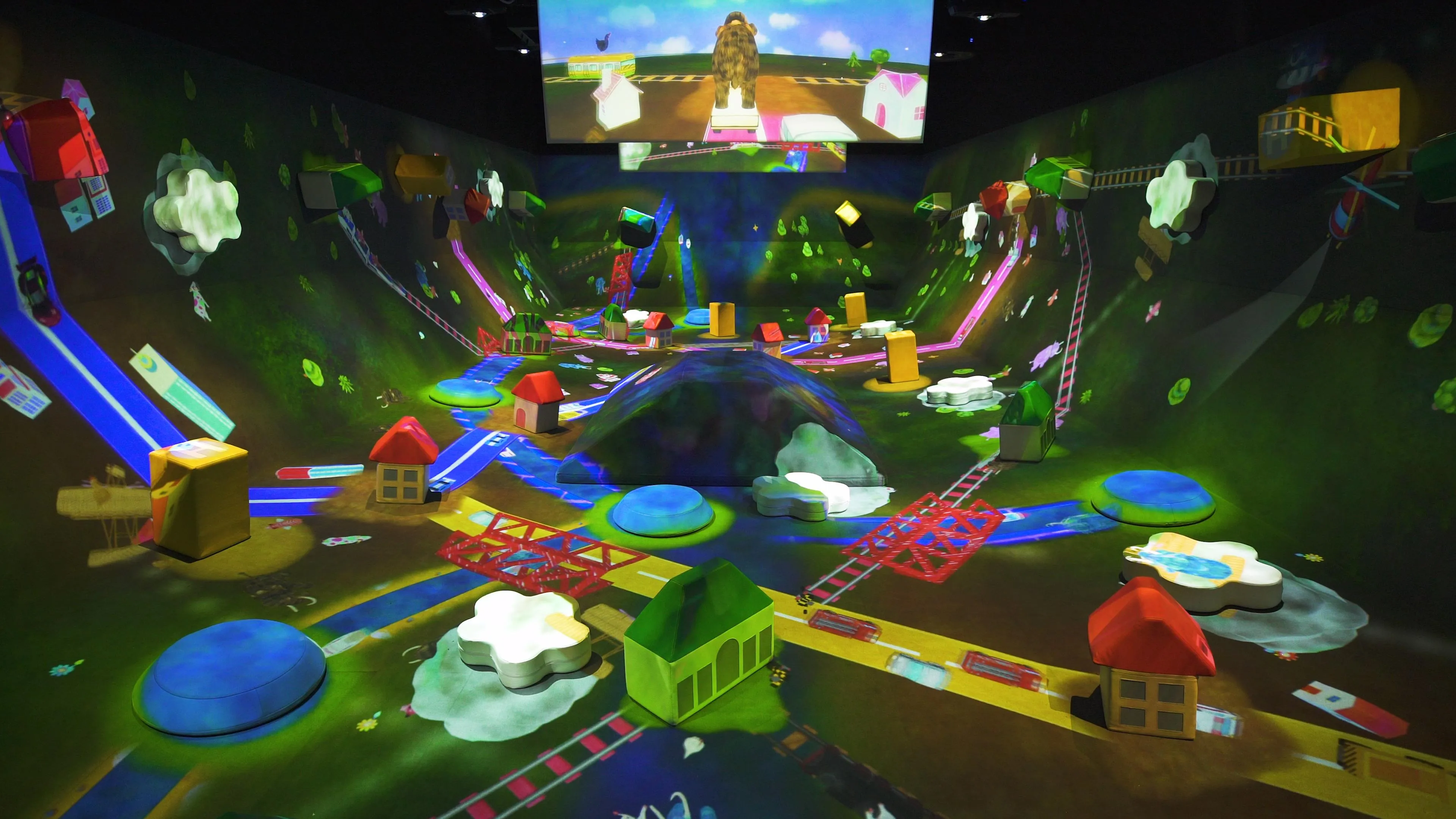
Inverted Globe, Giant Connecting Block Town
teamLab, 2018-, Interactive Digital Installation, Sound: Hideaki Takahashi
Make the city come to life by placing giant building blocks of houses and stations, running various vehicles such as cars and trains, and developing transport systems.
When blocks of the same kind are placed nearby, they are connected to let the vehicles move along the routes created. Connect the blocks, and the vehicles will evolve more and more. Helicopters fly from the building and the world seen from the helicopter is projected on the screen in the sky.
The world has a river running through it. When it rains, the river floods and the water runs into the city. However, building a waterway with pond blocks and connecting the waterway to the sea will prevent flooding.
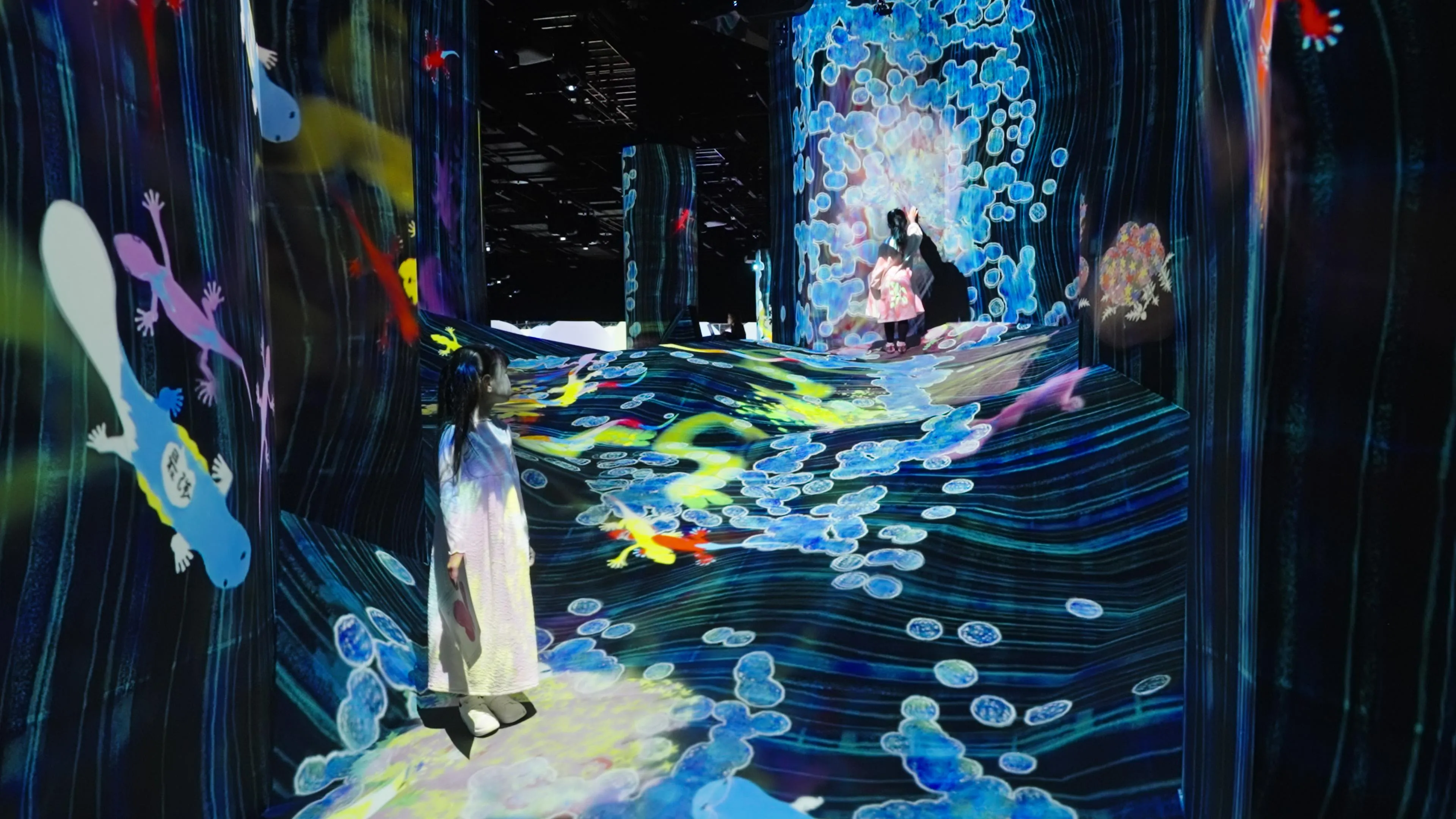
Waterfall Droplets, Little Drops Cause Large Movement
teamLab, 2018-, Interactive Installation, Sound: Hideaki Takahashi
When just one droplet splashes it bounces like a ball, but when people use their entire body to gather and collect the droplets, they act like water.
When the droplets separate from each other, they bounce like balls again.
A water molecule on its own is not liquid. In order for water to be a liquid, many water molecules must come together.
Because water molecules act like magnets, they stick to each other, forming a group of water molecules (a water cluster). Water clusters have an extremely short lifespan and are thought to be constantly being created and broken apart. They have a very dynamic structure and because of that, water can change into various forms.
Most living things and objects in this world, through properties that are more than the simple sum of the properties of their parts, appear as a whole.